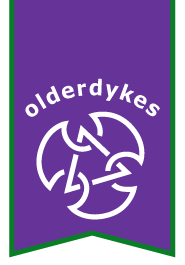17 Feb Murder and Mayhem at Haberfield – Exploring Crime Fiction, with Pearlie McNeill
Dinner and Discussion for Older Lesbians – Saturday 1 February 2020
Murder and Mayhem at Haberfield – Exploring Crime Fiction, with Pearlie McNeill
Despite this distressing summer of bushfires, tragedies and extreme heat, 22 women found the energy to come to our newly renovated venue, Mervyn Fletcher Hall in Haberfield, for this event.
Imagine our delight when we found the renovations included air conditioning, a luxury missing in past years. It was a bit noisy, the acoustics are certainly not the best, and no hot water hydrotherm meant no coffee and tea, but after the usual feast provided by everyone, we settled down to hear a professional writing teacher delve into the murky world of crime.
Pearlie has worked as a Creative Writing teacher, book seller, editor and is a writer herself. Moving from a love of literature into the study of literature and writing was an understandable move. She holds a doctorate in Creative Writing and has a wealth of experience.
She started reading crime fiction in the 1990s and shared her knowledge with us. There are nowadays many women crime writers and the genre is extremely popular with women readers.
Structure-
The closed setting, first introduced in a short story by Edgar Alan Poe, is where the victim/s and the possible murderers are to be found in the one setting. Think of an Agatha Christie location; a train, an ocean liner, a mansion. These are clear examples of a Closed Setting.
An Open Setting occurs when an assailant kills a victim in a public place and promptly disappears. How do the police track this perpetrator down? Perhaps they have someone in prison who committed a similar crime? Think of Jodie Foster in Silence of the Lambs and you can understand that the challenge is to break down the broad picture by trying to get a hold on the narrative by checking out the victim’s past life and contacts say, or the murderer’s method of killing, plus any clues left behind.
An Open Setting presents the writer with a bigger challenge but the credibility of any plot lies in the writer’s ability to produce a good story, avoiding coincidence or an easy assembling of clues.
The denouement is usually in the last chapter. That last chapter where all the threads of the investigation are explained and/or resolved. Readers might well judge a writer on how they tie up these threads, or not tie them at all.
Pearlie read two short story beginnings and we had to choose by voting which of these we wanted to work on. This was a hard choice as they both held our interest. Pearlie then gave each of our three groups a task to undertake using the chosen storyline.
The buzz of conversation and debate filled the room as participants lobbied each other to promote their theory of the motive for the crime, who was the perpetuator and what was their character description. When we reconvened and shared our results it was clear that we all had creative ideas but recognised the difficulty of developing even the main aspects of the genre. It was a lot of fun and enjoyed by all.
Feedback indicated that we were stimulated by the well prepared presentation. Participants loved the group discussion and audience participation.
We shared some of our favourite crime writers and books. Pearlie asked for participants, and perhaps those reading this report, to send her titles they would like to see included in a crime fiction list that will appear in the newsletter. This was a fabulous start to the year.
Contact us with your title suggestions at contact@olderdykes.org
Sylvia Kinder February 2020






Sorry, the comment form is closed at this time.